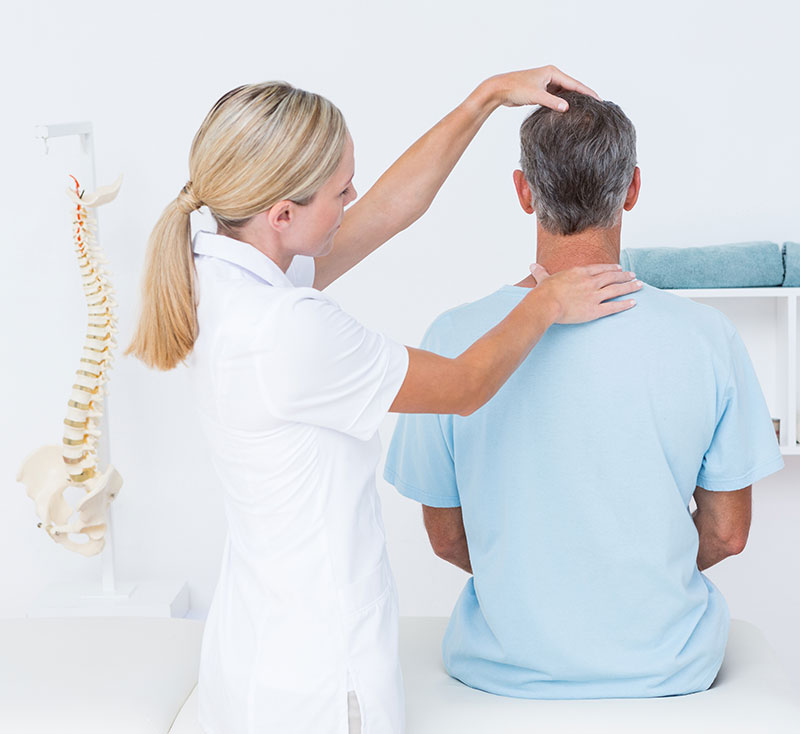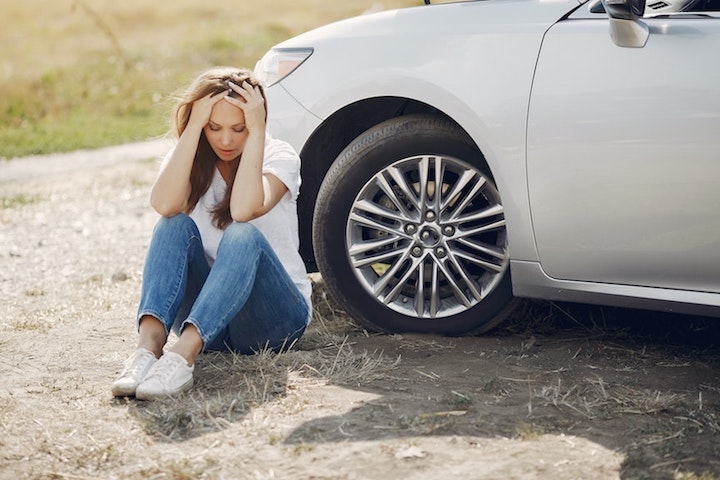A car accident can be completely jarring in many ways for our patients, not least of which is the potentially chronic painful aftermath in their neck and back from whiplash or worse. However, it seems that many patients are unsure of seeking treatment from a chiropractor first, even though clinical guidelines suggest a referral to a chiropractor before a specialist. According to a recent study in 2020, guidelines for primary care doctors, as long as patients are cleared of any serious injuries sustained from the accident, they should be referred to alternative care like chiropractic for pain, before radiology or specialists.
Conventional Medicine After Car Accidents
Of course, after a car accident, especially if it was a serious accident, a patient should always be advised to go to an emergency room or primary care doctor first to be cleared of any serious or life-threatening injuries. While we are able to help and treat our patients who have been through a car accident, it is also important for us as professionals to know when patients need to be seen by a hospital or PCP first.
However, we also know that the downside of seeing a PCP first is that once more serious injuries or broken bones are ruled out, if it is only pain that the patient is experiencing they are often just prescribed pain and anti-inflammatory medications, and sent on their way. These medicines may provide immediate relief, but it is usually temporary, and not a long-term resolution for their pain management. Additionally, these prescriptions do not aid in regaining mobility after a car accident in the way that chiropractic does.
Chiropractic Benefits for Car Accident Patients

The benefits of chiropractic treatment for pain after a car accident are many, and it helps to treat the underlying injury.
Chiropractic treatment benefits:
- Decrease Pain – relief in targeted affected areas and throughout the body through spinal adjustments.
- Reduce Pain Medication – giving pain relief in affected areas and through the body may help with pain management. Many times, patients may find less of a need to continue taking pain medications. Through chiropractic, the underlying injury is treated, not masked, as prescriptions medications tend to do. In turn, this also aids in the opioid epidemic sweeping the nation, as these medications can be very addictive.
- Re-Establish Range of Motion – car accident injuries and pain often lead to restricted range of motion due to inflammation in the muscles affected. Proper spinal adjustments will also encourage the healing process.
- Decrease Inflammation – spinal adjustments not only bring the spine back into alignment, but will also produce the body’s natural anti-inflammatory resources, thus helping with discomfort from muscle tears.
- Long-Term Healing – early intervention with chiropractic treatment after a car accident can help prevent possibly minor injuries from turning into a chronic condition.
- Decrease Scar Tissue – after a car accident, the micro-tears that are not able to be detected by an x-ray cause pain, tenderness, and rigidity in those muscles affected. Chiropractic treatment targets these areas allowing the patient to feel better quicker.
Chiropractic treatment can be very helpful, especially in addition to other therapies. For example, corrective exercise can also be used to re-establish range of motion and relieve pressure on the muscles affected by the car accident. As chiropractors, we can identify why symptoms are emerging, and provide patients with a solid treatment plan.
Chiropractor Car Accident Treatment Protocol

Spinal manipulations are obviously the backbone (pun intended) of our treatment for car accident patients, but there are many other modalities and tools we can use to assist our patients depending on their unique set of symptoms and circumstances. The interesting part of patients who have been through a car accident is that these symptoms may not appear for them until hours or days after the accident, and may not appear in full swing. This can cause patients to wait to get treatment because it’s “not that bad”. The most common issue patients face is in regards to whiplash, and there are many treatments that can be utilized in our practice.
Whiplash & Car Accident Treatment Options:
- Spinal Manipulation – identify the neck and spinal joints which are misaligned and position them back in place with adjustment techniques. Gently move the affected joint with a slow movement or apply a short thrust in the direction which is constrained depending on the preferred technique you use in your practice. A great technique to use might be the Cox flexion-distraction technique as it is gentle and non-thrusting.
- Trigger Point Therapy – pinpoint spinal joints that show subluxations, and use gentle thrusting to restore joint motion. Additionally, you can place direct pressure using your fingers on the trigger points to alleviate tension.
- Muscle Stimulations – use gentle stretches of the muscles with excessive tension, and if the if the patient’s muscles are extremely tight, apply a more vigorous stretch. Same as with trigger point therapy, gentle finger pressure can also be applied to tight muscles causing pain.
- Electrical Stimulation (E-Stim) – having an interferential electrical stimulation device is a helpful tool to have in the chiropractic office of those who often deal with car accident patients. It delivers a low-frequency current to stimulate injured muscles lowering inflammation and pain caused by a car accident and whiplash. The use of therapeutic ultrasound sending sound waves to create a gentle heat would be helpful in encouraging muscle relaxation, stimulating blood circulation, decreasing neck stiffness, and muscle spasms.
- McKenzie Exercises – these exercises are designed specifically to decrease disc instability related to whiplash, and teach the nervous system to control and harmonize better movement enhancing neck muscle stability. These are ones that would be implemented both in the office, and instructed to the patient to perform at home allowing patients to take a more active role in their recovery process. Stabilization and sensorimotor approaches may also be used to correct damaged movement patterns.
- Soft Tissue Therapies – being that whiplash is a soft tissue injury, it would also be useful to possibly implement soft tissue therapies into a treatment plan should a patient’s condition warrant it. This will re-establish muscle function with the application of pressure or stretch to muscles with a lot of tension. The most common soft tissue therapy is therapeutic massage.
- Instrument-Aided Therapy – the activator or Graston tool would be helpful in car accident patients in order to provide targeted treatment to the affected area. The Graston technique can be particularly useful as you can provide gentle repetitive strokes over the injured region.
- Ergonomic Advice – offer your car accident and whiplash patients exercises they can perform daily with minimal strain. You can also instruct the patient how to better use their body in a way that reduces stress on their injury and ease whiplash pain.
If you are not already seeing a multitude of car-accident patients, and need further training, you will want to get specific certifications that would allow for a more well-rounded treatment for your car-accident patients.
Certifications to obtain for car-accident clientele:
- CCEP – Certified Chiropractic Extremity Practitioner
- CCSP – Certified Chiropractic Sports Physician
- CCST – Chiropractic Certification in Spinal Trauma
All of which can be found at the American Chiropractic Council, International Chiropractic Association, and other accredited Universities available on the ACA’s website.
Should I Specialize in Car-Accident Injuries?
Chiropractic treatment could be the key to a patient’s sustained recovery, but it is also important for us as healthcare professionals to work collaboratively with the patient’s conventional medicine doctors in order to best serve them. If you want to implement more car-accident treatments in your practice, be prepared to get the appropriate additional education to do so, and be able to work with practitioners outside of your care to best suit the patient’s needs.

